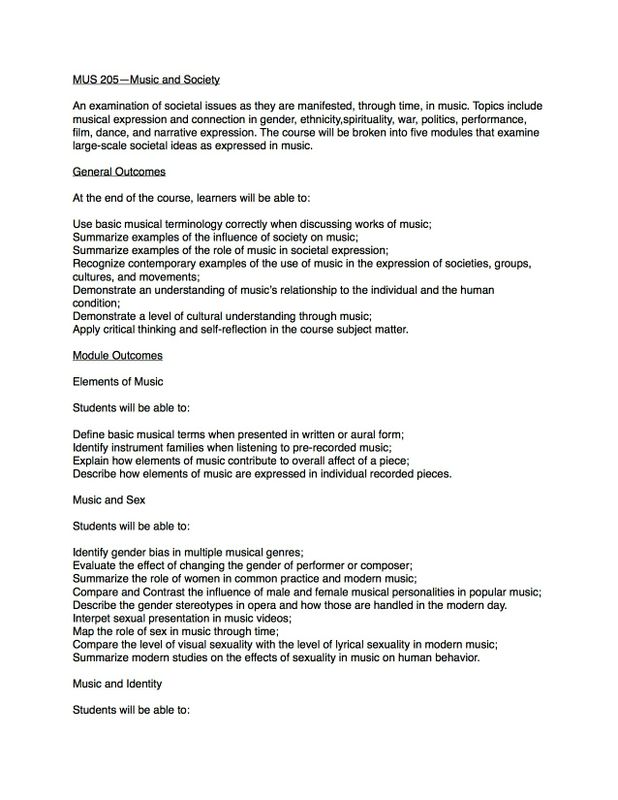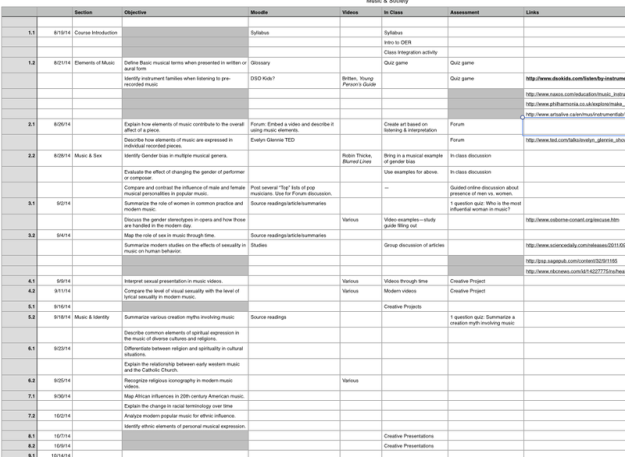I’m now in the second semester of teaching this course in an open resource format, and five weeks into the second semester, I’ve finally managed to get my OER classroom under control. For the first semester, I really felt like I was flying by the seat of my pants, and moving into the second semester has been very reassuring. Having materials already prepared has let me focus more on the quality of the materials, options, and my own teaching. I can already tell from my interactions with students and their interactions with each other, that it’s better this semester than the last. I’m more comfortable and they are more comfortable.
Here’s the tour of my classroom and some of the resources I’m using.
You’ll notice that I have not included quizzes or tests in my tour. By design, this course can be assessed using written submissions, classroom activities, and creative projects. So, when you look through the materials, the absence of these items is not an oversight, it is a design choice.
Things that have developed:
- I’ve been able to use a larger number of films, videos, and music samples. Instead of committing them to reading chapters and chapters from books, newspapers, and journals, many of the ideas can be better captured in documentaries, music videos, and full length musical productions. Many of these are available through the school’s Films on Demand subscription and the remainder are YouTube based. Both allow for captioning, although the YouTube video captioning is at the mercy of the video creator. Anything I’ve created is accurate, but those are often not cleaned up the way I would like. One of the things I struggled to find was full musical presentations with English subtitles. These are readily available on DVD, but it’s difficult to put a DVD into a digital classroom. This one of Mozart’s Die Zauberflöte is excellent.
- I rely more class discussion and written and creative projects to flesh out critical thinking. Many books connect the dots for the students, but by providing them with information sans narrative, I can provide an opportunity for discovery and self-initiated thinking and learning. It’s been amazing to watch the students draw conclusion based solely on data and experience. They can and they will.
- I still struggle feeling like I have provided enough. What would I add? I’m not sure, but I worry that students may need information from another perspective in order to succeed at a higher level. Thoughts for the future:
- Podcasts
- Study Guides
- Lecture capture
- Screencasts (especially for an online course)
My Advice, such as it is:
- Don’t be afraid. It is daunting, but it can be done.
- Don’t teach THROUGH your design. Design, then teach. I had about half of the class done when last semester started, but I still found myself scrambling for materials, making non-ADA compliant PDF copies and hoping that everything would work out. Having to do both at once was difficult for me. Even if you change it as you go, having a solid, “more than enough” framework is a good idea.
- Think outside the box. There are so many resources available that it’s a great time to try something different. I used films and journal articles, neither of which were present in my class before the OER move. I was committed to doing study guides, but I left them out because they didn’t fit in with the way the course matured. Instead of linking to a site with information on musical terms, I used a Quizlet stack so that students could play games, use flashcards, and otherwise challenge themselves to learn the terms. Who knew?
- When you start, let your old textbook be a guide, but stay closer to your objectives than your textbook. In order to really frame this course, I created about 50 unit-specific objectives that fit within the greater framework of my course. I had a textbook that provided nice guidance for what to use and how to use it, but I found that the more time I spent on design and teaching, the more I let the objectives guide me to new, better, more accessible sources.
- Ask for help when you need it. I rarely do this, and my work suffers for it. I know that getting my materials into compliance with ADA standards will be a challenge. But, it will only be a challenge because I didn’t do it right the first time. I just didn’t take the time to ask and receive the help I needed. That is my next step.
So, would I do it again? Absolutely. I’ve already started outlining how I will take our highest enrollment music class OER for Fall 2015 in both face to face and online formats.

